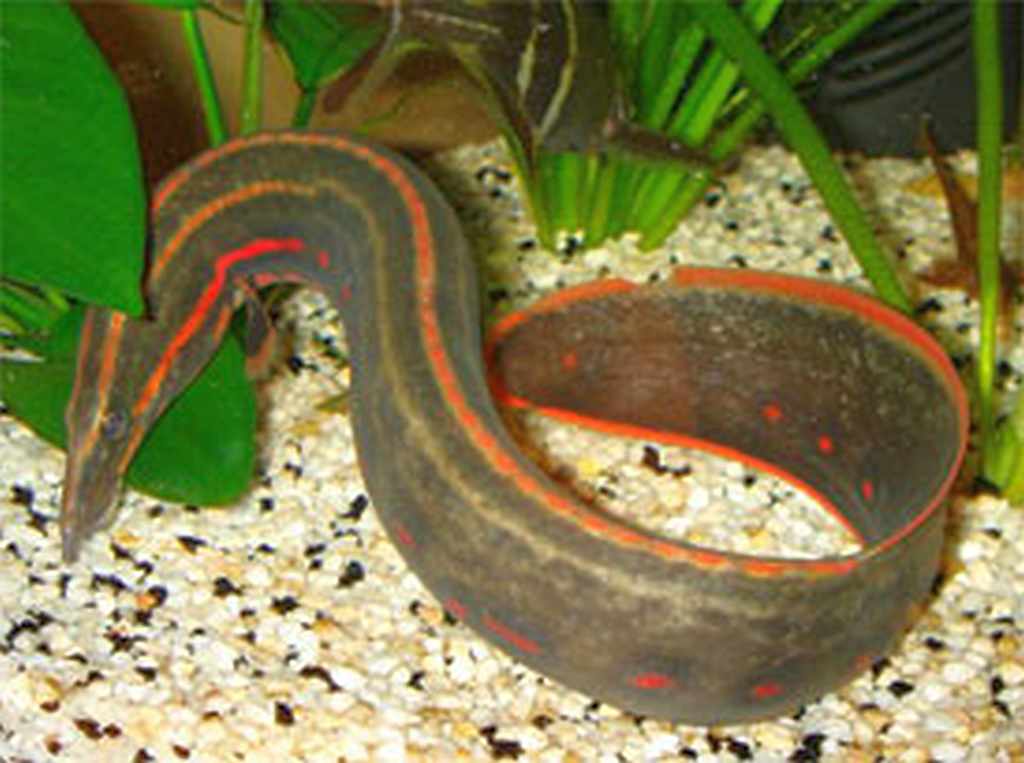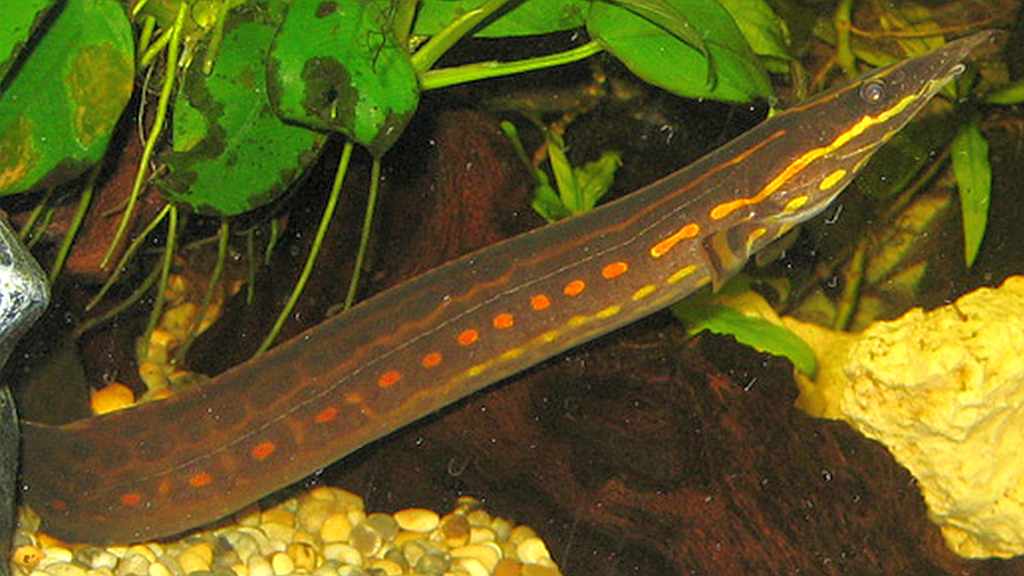The Fire Eel (Mastacembelus erthrotaenia) is found in Cambodia, Indonesia, Laos, Malaysia, Thailand, Vietnam, India, Burma, Sri Lanka, Borneo and Sumatra.
Fire Eels are voracious nocturnal predators that usually inhabit slow to briskly moving rivers with fine sediment bottoms and spend most of their daylight hours buried in the substrate with only their snouts visible. They emerge at dusk to forage on small fishes, worms, and crustaceans.
The Fire Eel is a member of the Mastacembelidae family that is also known to tropical fish keeping enthusiasts as spiny eels. Like the Tire Track Eel and Peacock Eel, they get their name from the many small dorsal spines that occur just before their dorsal fin.
Although the Fire Eel is not a true eel, they have an extremely elongated, laterally compressed body with a distinctive pointed snout and an under-slung mouth. Their body color is a dark brown to gray that becomes a lighter shade at the belly.
The body is marked with several bright red lateral stripes and spots that vary in intensity depending on the age and general condition of the specimen.
In juveniles, the markings are yellow to amber colored and in adults, they are usually a bright deep red color. The pectoral, anal, and dorsal fins are also often edged in red.
In their natural environment, Fire Eels grow to almost 4 feet in length however, in an aquarium environment, they seldom exceed 22 inches in length, even in a large tank.
Because of their size, Fire Eels should be housed in at least a 125 gallon densely planted aquarium, with a sandy or fine gravel substrate, some
floating plants to diffuse the lighting, plenty of rocks structured into caves, and plenty of bogwood
or driftwood
roots for places to hide. Their burrowing habits will quickly rearrange the scenery in your tank, so unpotted plants are not a good idea with these fish. Potted plants will provide them with places to hide and are less likely to be uprooted.
Fire Eels need some water movement and a good filtration system which makes canister filters a good choice for this species. A tightly fitting tank cover is also necessary for these escape artists.
Many tropical fish keeping enthusiasts keep Fire Eels in a community environment with fish of similar or larger size without any problems, however they are aggressive and intolerant to their own kind. This is undoubtedly why there are no documented cases of Fire Eels being bred in an aquarium environment.
Fire Eels are carnivores that prefer live foods such as earthworms, black worms, small fish, prawn, some plant matter or detritus, and other small crustaceans. Juveniles can be weaned off of live foods and over time will often accept frozen or freeze dried krill, ocean plankton, lancefish, and even prepared tablet foods however, larger adults need live foods to sustain them.
Fire Eels are available for purchase online and from specialty tropical fish keeping shops when they are 4″ to 8″ in length.
Minimum Tank Size: 125 gallons
Care Level: Moderate
Temperament: Semi-aggressive
Aquarium Hardiness: Hardy
Water Conditions: 75-82° F, 5 – 12°H, pH 6.0-7.0
Max. Size: 36″
Color Form: Tan, Red
Diet: Carnivore
Compatibility: Single species tank or community
Origin: Southeast Asia
Family: Mastacembelidae
Lifespan: 20 years
Aquarist Experience Level: Intermediate




